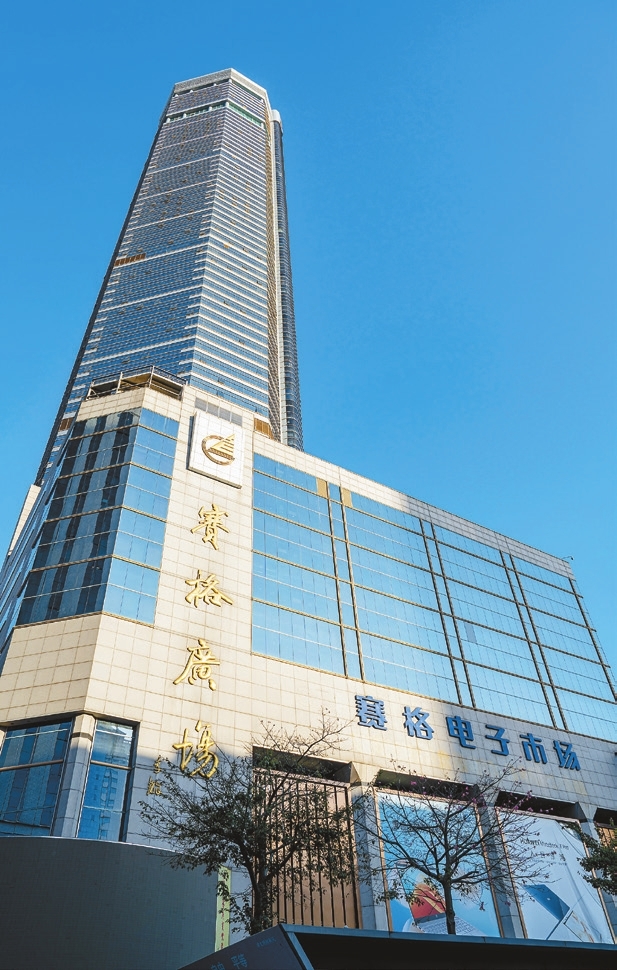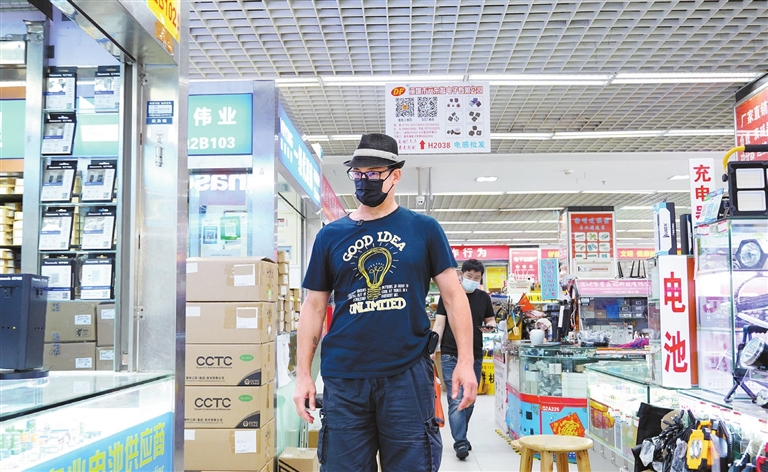


Wei Jie claudiamente@hotmail.com “WERE I not about to get married I wouldn’t have gone home [in New Zealand]!” Terry Given, an electronics specialist from New Zealand, said so as he recalled his first visit to Shenzhen in October 2003. “I fell in love with the place when I first came here.” During that Shenzhen visit, Given’s childhood friend who had lived in the city for years took him to Huaqiangbei. Given said that the place was somewhere he’d dreamed of growing up. “I was like a kid in the candy ground,” he excitedly said as he talked about Huaqiangbei, dubbed as the No. 1 electronics street in China. “My friend Paul knows I’m an electronics engineer, and he knew I’d love it, which I did,” he added. After that trip, Given took home about 30 kilograms of various electronic components he bought at Huaqiangbei. “My briefcase was an aluminum toolbox only about this big, and it was filled with ferrites, oscilloscope probes, lots of big capacitors and things like that,” he said. Ferrites is “pretty much iron, that’s why my briefcase weighed 30 kilograms.” Ferrites make up the material used to form the core of magnetic devices such as transformers and inductors. He said he carried a briefcase full of ferrites back to New Zealand because he “couldn’t really get ferrites in my home country.” He said after that trip he “couldn’t wait to come back” to visit Huaqiangbei again. Since that trip until 2013, when he settled down in Shenzhen, Given had spent about four to five months a year visiting various factories in the Pearl River Delta area developing electronic products for his clients in the U.S., Singapore and China. Every time he came to China for work, he would make sure he spent at least a weekend in Shenzhen to hang out with Paul in Huaqiangbei and buy more components to stock up his laboratory back home. “We don’t have anything even vaguely like Huaqiangbei in New Zealand,” he said. In 2013, when Given and his employer, an ODM/OEM audio equipment manufacturer in Danshui, Huizhou, relocated to Shenzhen, his wish to be based in the city came true, and he had the chance to rediscover his “candy land.” Given found Huaqiangbei as exciting as it had always been even though the place has become substantially bigger and nicer after undergoing renovations. “There’s just basically more stuff for me to look at and more fun things to buy [for his lab].” After years of development, Huaqiangbei has become more than just an electronics market. It now features many industrial functions such as tech introduction and exchange, product development and release, logistics warehousing and distribution, and talent exchange. “I know there’s a big maker community here, too,” Given said, although he personally has not been involved in any of the makerspaces as he mainly focuses on work like doing engineering calculations, magnetic design and feasibility study for the electronic products his clients want to develop. According to Given, back in 2003, the maker community barely existed in Huaqiangbei. Now, it has become huge and gained fame internationally, and he said, “I’ve got a bunch of friends who are involved in the maker community making amazing things. I’m aware of it. Literally, next door, places like Hax.” The place has attracted makers from around the world as Huaqiangbei has basically everything makers would need to develop a novel product to offer, as well as a sound industrial chain to help them commercialize their new inventions. The entrepreneurial-minded people in Huaqiangbei also helped make this happen. “They [in Huaqiangbei] will supply whatever customers ask for,” Given said. People quite often complain about cheap knockoffs sold in Huaqiangbei, but the real problem is, Given said, that “people want to pay almost nothing for something that looks like a good thing.” “For example, you can go to a store that makes battery drills and you can get them to make you a 12-volt lithium ion battery drill for, like 40 yuan (US$5.56), and they will make one for you for that price. What do you expect you’re gonna get for 40 yuan?” Given said he had been through a period of buying cheap knockoffs in Huaqiangbei. “A fair amount at the beginning was inadvertent. It’s my fault,” he said, adding that he started changing his purchasing behavior after realizing that cheap is not cost-effective. And since then, he bought a lot of great stuff, and “now about two-thirds of the equipment in my lab are of extremely high quality. They are more expensive, but still every cost-effective.” For example, Given said, his company has turned to a Chinese oscilloscope brand, which costs only one-third of a foreign oscilloscope brand, but functions equally well. “I just love this place. This is the kind of place that a kid like me would wish to have grown up in,” the electronics specialist said. | 
